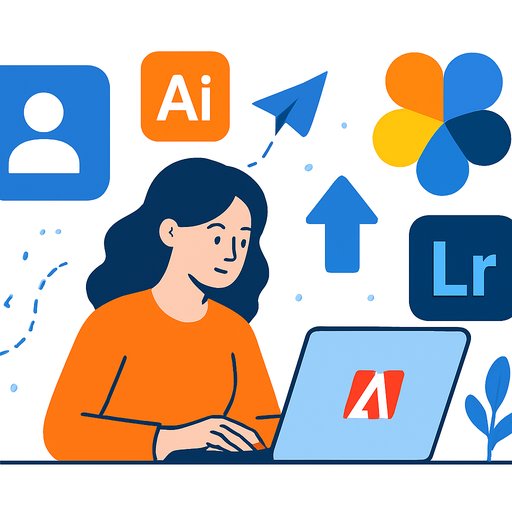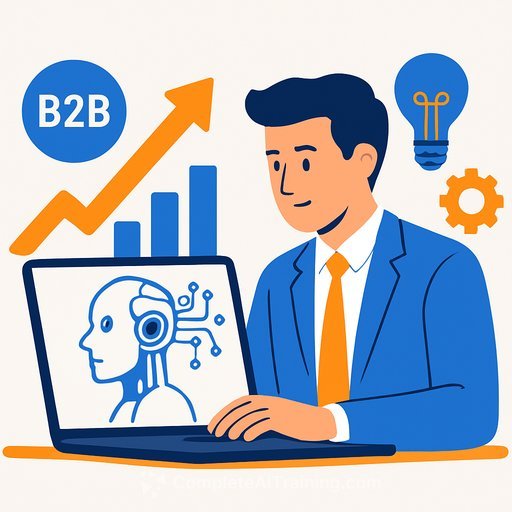Why big brands are leaning into Adobe's AI
Big brands want AI inside the tools their teams already use. Adobe put new AI features into Photoshop, Illustrator, Premiere Pro, and Express-so marketers get speed without reinventing their workflow.
That familiarity matters. You get faster creative cycles, fewer vendor handoffs, and assets that stay on brand because they're built where your guidelines already live.
What this means for marketing teams
- Fewer bottlenecks: Brief to first draft in hours, not days.
- More testing: Ship 10 variations, keep the 2 that convert.
- Tighter brand control: Central libraries, styles, and approvals in one stack.
- Lower risk: Enterprise controls, usage rights, and audit trails built into the workflow.
High-impact use cases you can deploy now
- Ad creative at scale: Generate on-brand image variations for channels and locales. Lock logos, type, and color with library presets.
- Product launches: Create campaign visuals, landing page art, and social cuts from one approved master.
- Content refresh: Update backgrounds, swap objects, and resize for new placements without reshooting.
- A/B assets for paid: Spin headline, background, and layout variations to find winners faster.
- Localization: Adapt imagery and copy tone for markets while keeping brand consistency.
Brand safety and governance
For enterprise teams, two things matter: what the model was trained on and how outputs are tracked. Adobe emphasizes commercially safe outputs in its enterprise offerings and supports Content Credentials so teams can see how assets were created.
If you need a primer on Adobe's generative AI approach, start here: Adobe Firefly overview.
A 30-day rollout plan
- Week 1: Pick two use cases (e.g., paid social variations and landing hero images). Define guardrails: approved fonts, colors, product angles, claims.
- Week 2: Build a shared library in Creative Cloud. Convert brand guidelines into prompt templates and negative prompts. Set export specs per channel.
- Week 3: Produce a pilot set: 20-40 assets across 3 concepts. Run quick feedback loops with design, brand, and legal.
- Week 4: Launch controlled tests. Document what shipped, what converted, and what to automate next.
Prompt frameworks that keep assets on brand
- Structure: [Objective] + [Audience] + [Brand tone] + [Visual cues] + [Constraints]
- Example: "Create a clean, high-contrast product hero for a B2B SaaS audience, confident tone, neutral background, brand blue accents, device in right third, no extra text."
- Negative prompts: "No skewed logos, no drop shadows, no glossy reflections, no stock watermark look."
Metrics that matter
- Time-to-first-draft: Target 60-80% faster.
- Cost per variation: Track design hours saved per asset.
- Creative throughput: Variations produced per week per designer.
- Performance lift: CTR/CPA by creative concept, not just audience.
- Brand compliance: Revisions per asset before approval.
Common pitfalls (and fixes)
- Generic outputs: Feed brand references and style boards. Use negative prompts to block off-brand looks.
- Approval delays: Pre-approve prompts, textures, and color sets. Automate export presets by channel.
- Version chaos: Name files by concept_channel_variant. Store in one shared library.
- Legal uncertainty: Document prompts, sources, and approvals. Keep Content Credentials on.
Team enablement
Upskill the team once-then systemize. Create a living prompt library, a checklist for brand and legal, and a simple dashboard for creative performance.
If you want structured training for marketers working with AI, explore this certification: AI Certification for Marketing Specialists.
Bottom line
AI works best where your designers already live. With Adobe's tools embedded in everyday workflows, marketing teams can ship more on-brand creative, test faster, and spend their time on the ideas that move revenue.
Your membership also unlocks:






